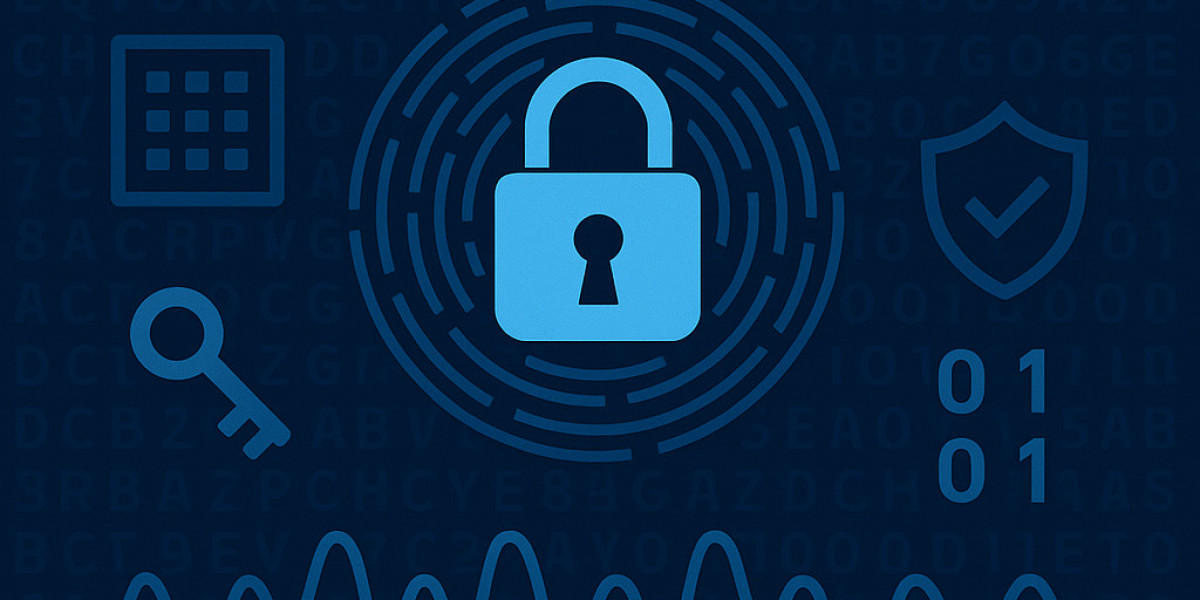But here’s the truth: cryptography is the silent guardian behind the magic of blockchain—and it's not as complicated as it seems.
At Coinpedia.org, we believe that anyone can understand the technology shaping our future. So, grab your coffee, relax, and let’s unravel the mystery of cryptography and how it keeps the blockchain world secure—in plain English.
What Is Cryptography, Really?
Let’s start at the very beginning.
Cryptography is the art (and science) of keeping information safe. It involves creating codes and puzzles that only intended recipients can understand. Remember passing notes in class using a secret alphabet only you and your best friend knew? That’s basic cryptography.
In the digital world, cryptography does the same thing—but instead of love notes or jokes, it's protecting data, transactions, identities, and even entire economies.
The Role of Cryptography in Blockchain
Now, how does this tie into blockchain?
Blockchain is essentially a public ledger—a decentralized database—that records transactions. Every time someone sends Bitcoin, mints an NFT, or interacts with a smart contract, that action is recorded on the blockchain.
But here’s the problem: It’s public. Anyone can view the blockchain. So how do we ensure privacy, authenticity, and security?
Enter cryptography.
1. Securing Identities with Public and Private Keys
In the blockchain world, your wallet is your identity. But instead of a name or email address, it’s represented by two things:
Public Key: Like your home address—you can share it freely.
Private Key: Like the key to your house—never share it.
When you want to send crypto, you “sign” the transaction with your private key. The blockchain network uses your public key to verify that signature. If it checks out, the transaction is approved. No need for a bank, middleman, or even your real name.
Coinpedia Tip: Never share your private key with anyone. Ever. Losing it means losing access to your funds. It’s like throwing away the only key to a treasure chest.
2. Hashing: The Digital Fingerprint
Hashing is another powerful cryptographic tool used in blockchains. Think of a hash as a digital fingerprint—a unique string of characters generated from data.
Here’s why it’s important:
Each block in the blockchain contains a hash of the previous block.
This creates a chain (hence the name blockchain) that is tamper-proof.
If someone tries to change even a single transaction, the hash changes, breaking the chain.
Imagine writing a diary where every new page includes a code from the last one. If someone rips out a page or edits it, the codes won’t match anymore—and everyone will know.
In short: Hashing makes blockchain data immutable. Once something is recorded, it’s set in stone.
3. Consensus Mechanisms and Cryptographic Proofs
In a decentralized world with no central authority, how does the blockchain agree on which transactions are valid?
That’s where consensus mechanisms come in, and they heavily rely on cryptographic proofs.
Let’s look at two popular methods:
? Proof of Work (PoW) – Used by Bitcoin
In PoW, miners solve complex cryptographic puzzles to validate transactions and create new blocks. It’s like a race to crack a super-hard math problem. The first to solve it wins a reward (new bitcoins) and adds a new block to the chain.
This process is energy-intensive but extremely secure. It’s nearly impossible to fake a block because doing so would require rewriting the entire chain and solving all those puzzles again—faster than the rest of the world combined.
? Proof of Stake (PoS) – Used by Ethereum 2.0
PoS replaces puzzle-solving with staking. Validators lock up a certain amount of crypto as collateral. If they validate a fraudulent transaction, they lose their stake.
Cryptographic signatures and validations still play a big role here, ensuring transactions are legitimate and that validators act honestly.
Real-World Example: Sending Bitcoin Securely
Let’s walk through a simplified example:
You decide to send 0.01 BTC to a friend.
Your wallet signs the transaction using your private key.
The Bitcoin network verifies the signature with your public key.
Miners solve a cryptographic puzzle to include your transaction in a block.
Once the block is added, your friend receives the BTC.
Throughout this process, cryptography ensures:
✅ Only you could have authorized the transaction
✅ The transaction wasn’t tampered with
✅ It becomes part of an irreversible, public record
Magic? Nope—just math and cryptography working behind the scenes.
Why You Should Care (Even If You’re Not a Techie)
If you're reading this on Coinpedia.org, chances are you’re interested in crypto, blockchain, or the future of finance. But even if you’re not a developer or a cryptographer, understanding how cryptography protects your digital assets is empowering.
It helps you:
Choose secure wallets and platforms
Recognize scams and phishing attempts
Understand why decentralization matters
Trust in a system without needing to trust individuals
In a world moving rapidly toward digital everything, knowing how your data is secured is not just smart—it’s essential.
Coinpedia’s Take: Demystifying the Tech That Shapes Our Future
At Coinpedia, we’re on a mission to make the complex world of blockchain simple, engaging, and accessible to everyone. We break down the tech without the jargon, because we believe this knowledge shouldn’t be gatekept by a select few.
Whether you’re a beginner, investor, or developer, our goal is to empower you with information that matters—starting with foundational concepts like cryptography.
Because once you understand how the puzzle fits together, the blockchain world becomes a whole lot less intimidating—and a lot more exciting.
Final Thoughts: Cryptography Is the Backbone of Blockchain
Without cryptography, there’s no blockchain. No Bitcoin. No NFTs. No decentralized finance. It’s the unsung hero that makes the entire system work.
So the next time someone tells you blockchain is just hype, you can smile and explain how cryptography—this ancient yet modern science—is securing billions of dollars in digital assets, all without the need for banks or middlemen.
And if they ask where you learned all this? Just say: Coinpedia.org.
? Ready to learn more?
Bookmark Coinpedia.org for your daily dose of blockchain brilliance. We’ve got explainers, news, insights, and guides to help you stay ahead in the crypto revolution.








